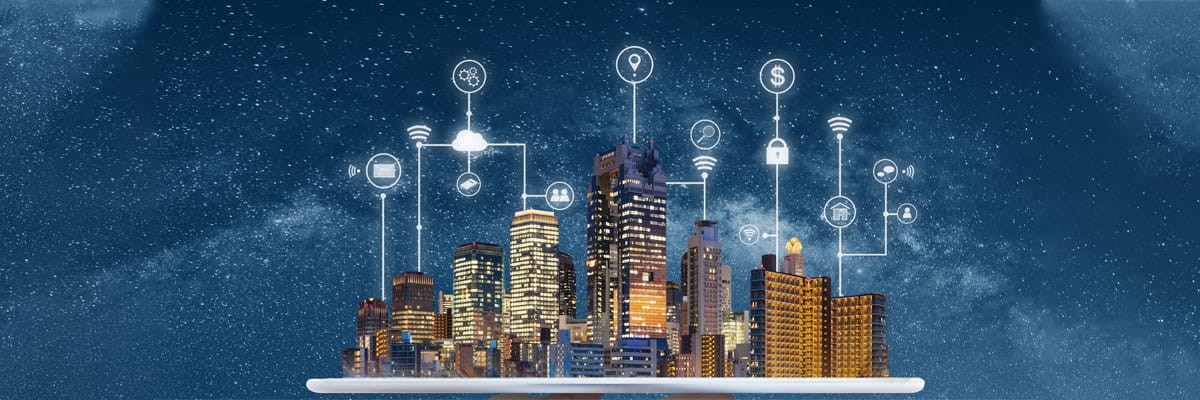Article How 5G Will Transform the IoT
By Insight UK / 28 Aug 2019 / Topics: Intelligent edge
By Insight UK / 28 Aug 2019 / Topics: Intelligent edge

After years of development and hype, 5G networks are now available in the UK. By the end of the year, next generation services will be available from all four major operators, eventually delivering gigabit speeds, enhanced capacity and ultra-low latency.
The initial focus will be on new consumer applications, but virtually every single industry will benefit from the advent of 5G. If used correctly, 5G can accelerate an organisation’s digital transformation strategy.
One of the main ways 5G will achieve this acceleration is the role it will play in connecting the Internet of Things (IoT). 5G will provide both the high capacity, low-latency connectivity needed for data-intensive IoT applications and the wide coverage needed for massive IoT deployments.
The Industrial Internet of Things (IIoT) requires the connection of many, mission critical, data-intensive machines located in close proximity. The best example of this is a connected factory which joins multiple machines, including robotics, in order to automate processes and make on-the-fly adjustments using Artificial Intelligence (AI) models powered by real-time data.
Some IIoT deployments have made use of 4G networks using unlicensed spectrum, however 5G will now allow this to take place on an unprecedented scale.
Firstly, 5G will use high range spectrum – the airwaves used to transmit television, radio and data signals – boosting capacity over short range. This includes the millimetre wave (mmWave) band which starts at 24GHz.
This high capacity ensures a reliable connection from the device to the network, while the low latency of 5G means it can be sent to the cloud (either a data centre or edge server) for processing and back at a rapid pace.
Mobile operators will also be able to guarantee a certain level of performance using a feature called ‘network slicing’. Network slicing sees a portion of a 5G network effectively ring-fenced for a particular application, guaranteeing a level of throughput.
This enhanced reliability and capacity ensures real-time data capture and processing, enabling applications such as the connected factory, the connected car, and Virtual Reality (VR).
Not all IoT deployments will require real-time huge data transfers. Certain applications, such as those in the field of smart agriculture or utilities, will only need to transmit small amounts of data infrequently.
Instances of mass deployments require wide coverage and low power consumption as devices are often located in remote areas for long periods of time. For example, an IoT network spread across a large farm would not be economically viable if an engineer had to be sent out to replace a battery every five years or so.
Other networking standards, such as Wi-Fi and Bluetooth Low Energy, consume less power than traditional cellular networks but they lack the widespread coverage.
The 5G standard includes support for two Low Power Wide Area Network (LPWAN) standards – Narrowband IoT (NB-IoT) and LTE-M. This ensures, when paired with low level spectrum such as the 700MHz band used to transmit television in many countries, that devices can connect to the network.
Mobile IoT is already possible, with 2G and 4G networks supporting a range of applications. Some operators even have dedicated IoT services for business customers.
Whereas previous generations of mobile connectivity were designed to connect people to people, 5G is the first standard to be designed with connections between different machines in mind.
Industry body the GSMA predicts that by 2025 there will be 3.1 billion cellular IoT connections, of which 1.8 billion will be connected via LPWAN technology.
The world is becoming increasingly connected and 5G is set to be the technology to link it all together.
Like this? Read more about what 5G networks can deliver for businesses.